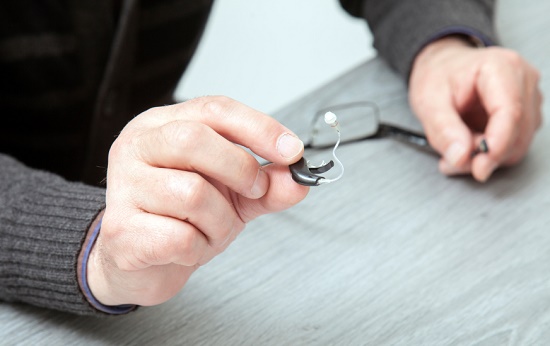
Murphy’s Law tells us that “if anything can go wrong, it will.” A better version might be that “things will go wrong in any given situation, if you give them a chance.”
That’s the reason we change the oil in our cars, switch out the filters, and rotate the tires. We’re trying to protect our investment and prolong its life.
You should consider hearing aids in the same manner. If you give things a chance to go wrong, they will; but if you’re proactive in your care and maintenance, your hearing aids can endure and operate properly for years.
So what are the things that can go wrong? Here are the three primary threats to your hearing aids and what you can do to protect against them.
1. Physical breakdown
Enemy # 1 is physical destruction. Hearing aids consist of vulnerable electronics that are susceptible to damage from shock. To defend against this, remember to store your hearing aids in their storage cases whenever you’re not using them.
A good guideline is that your hearing aids should be either in your ears or in the storage case at any given time. Placing your hearing aids unprotected on any surface is just asking for Murphy’s Law to come and bump them off. Similarly, when you’re putting in or removing your hearing aids, it’s a good idea to do this over a soft surface in the event that they fall.
Additionally, remember to check and replace the batteries often. You’re not doing the electronics any favors by having the hearing aids function on low battery power.
2. Moisture
Electronics and water do not mix, which anyone who’s dropped a cell phone in the sink understands all too well. Once immersed, there’s not much that can be done. But it requires much less than total submersion in water to harm your hearing aids.
Water, in the form of mist, can still work its way into the hearing aids and start causing havoc. As a result, you should avoid using hairspray, insect spray, or any other sprays while using your hearing aids. Additionally, remember that drastic changes in temperature can create condensation, for example moving from a climate-controlled room to the outdoors. If this happens, make sure to dry off any wetness that develops.
We also recommend not keeping your hearing aids in the bathroom, as the condensation can create issues. This is an additional reason that your bedside table drawer is probably the ideal place to store your hearing aids when they aren’t being used.
3. Earwax and dirt
Even if you’ve safeguarded your hearing aids against physical damage and water with adequate storage and the prevention of moisture, you’ll still have to protect against opponent # 3: dirt and grime.
Earwax, dirt, and debris can build up on the hearing aids, clogging the speakers, ports, and other elements. To protect against this, 1) sustain proper ear hygiene, and 2) clean and sanitize your hearing aids daily.
Regarding cleaning and sanitizing your hearing aids, ensure that you use only the equipment supplied by your hearing professional. Your hearing professional can supply cleaning kits and guidance exclusively for your type of hearing aids.
Finally, consider acquiring a hearing aid sanitizer. Sanitizers use ultraviolet light to thoroughly kill pathogens, all while providing a safe place for storage.
